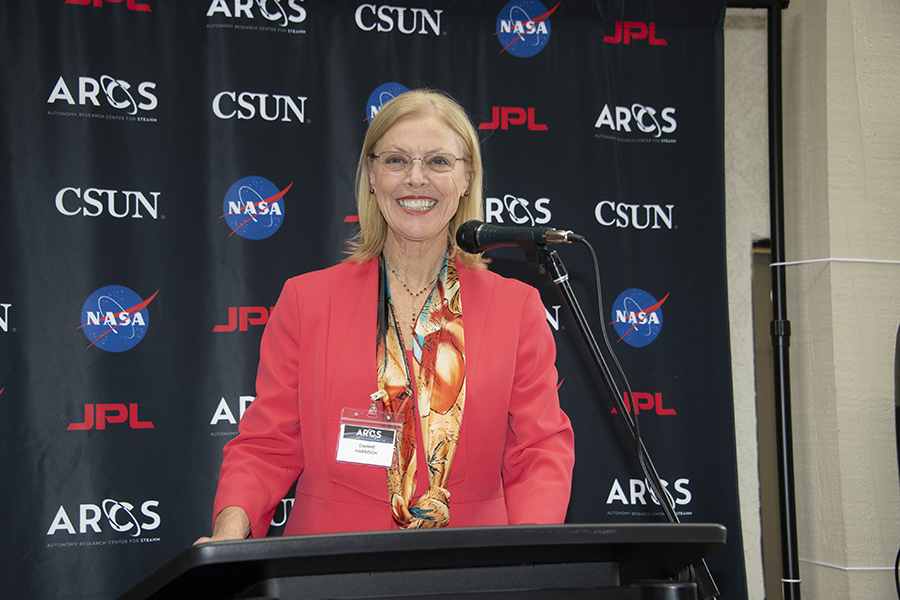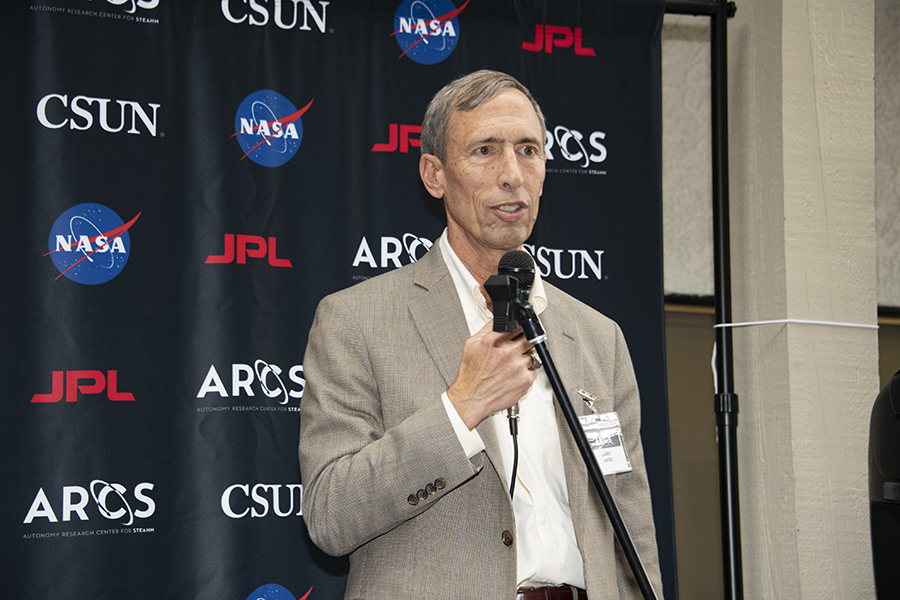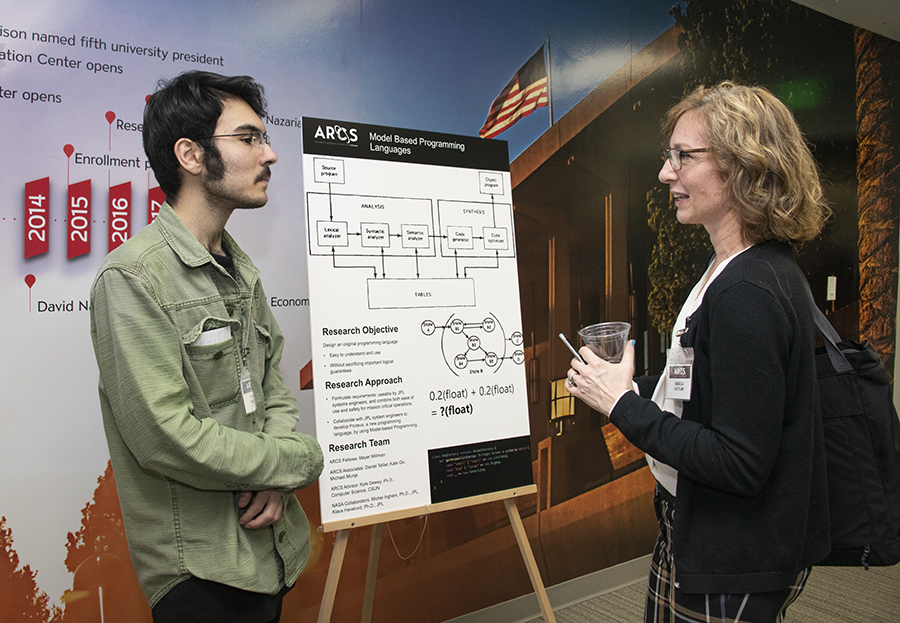CSUN-NASA Research Center Celebrates Liftoff
On Feb. 27, CSUN celebrated the launch of a groundbreaking new research center that will support a convergence of projects, in partnership with senior scientists at the NASA Jet Propulsion Laboratory (JPL) and NASA Armstrong Flight Research Center.
NASA recently awarded CSUN a three-year, $3 million grant to establish the NASA Autonomy Research Center for STEAHM (ARCS), where STEAHM stands for science, technology and engineering, entrepreneurship, arts, humanities and mathematics on campus. The center will serve as a research base for faculty and students from six of the university’s colleges as they study various aspects of increasingly autonomous (IA) systems — which range from autopilot to advanced systems that are able to adapt and evolve.
IA vehicles are essential to NASA as it moves forward in its mission of space exploration, urban air mobility and innovation. CSUN faculty and students will study the systems’ capabilities and weigh legal and societal concerns such as individual rights and privacy, among other issues.
“This is a truly momentous occasion — we are opening the door to new, transformative opportunities for CSUN students,” CSUN President Dianne F. Harrison said at the launch event at the Reseda Annex. “The center will be a key component in fulfilling CSUN’s commitment to educating 21st-century leaders who can solve our most pressing technological and social challenges.
“The center aligns perfectly with CSUN’s mission to foster student success and elevate lives,” Harrison continued. “This center of excellence will enable us to offer even more opportunities to students, positioning CSUN faculty and our graduates to be thought leaders, adept at collaborative innovation and prepared to thrive in the workforce of tomorrow. All of us at CSUN are truly grateful for this opportunity to strengthen our research capacity and infrastructure in partnership with NASA, and we are eager to see what the future holds.”
Planning for the Autonomy Research Center for STEAHM began in 2019, thanks to a grant from NASA’s MUREP Institutional Research Opportunity (MIRO) program. MIRO was established to strengthen and develop the research capacity and infrastructure of Minority Serving Institutions. The program has funded projects around the country related to NASA’s four mission directorates — aeronautics research, human exploration and space operations, science, and space technology.
“JPL really does value our educational relationships across the nation and across the world, and to be able to partner with one of our local universities, which has just an extreme amount of capacity, capability and diversity, is extremely important to us,” said JPL Deputy Director Lt. Gen. Larry James.
The center’s first cohort of student fellows — accompanied by faculty from the College of Engineering and Computer Science; College of Social and Behavioral Sciences; College of Science and Mathematics; College of Humanities; the David Nazarian College of Business and Economics; and Mike Curb College of Arts, Media, and Communication — are starting a new era of interdisciplinary STEAHM-based research at CSUN.
“I’m a true believer in the whole NASA focus on the convergent research, where we really look through the eyes of all these different disciplines to figure out some of the most difficult problems that we face in society, and look to how we move forward into a very different future,” said CSUN Provost and Vice President for Academic Affairs Mary Beth Walker.
According to the center’s founding director, mechanical engineering professor Nhut Ho, the first cohort has launched 14 different projects in partnership with NASA. Behind each project, he said, is a NASA senior scientist, a CSUN faculty member and a group of multidisciplinary students. In total, the number of CSUN students doing research with NASA is targeted to increase from about 20 to 150 students per year.
“Our vision is to be an international leader in education, research and commercialization of increasingly autonomous systems,” Ho said. “To realize that vision, we support NASA with autonomy research, we help develop a STEAHM workforce and build institutional capacity, and we foster societal impact.”
In five years, Ho said, center organizers hope to replicate their business models throughout the CSU system and at other Minority Serving Institutions across the country.
At the launch event, attendees had the opportunity to walk through a gallery space that featured 14 research posters created by student fellows and professors, who were eager to talk about their findings.
Among the fellows was computer science major Meyer Millman, who participated in a project using model-based programming to design a new programming language for JPL systems engineers that is safe and accessible.
“This is a great program and you definitely learn a lot, especially from other people collaborating with JPL and different majors, even from art and anthropology,” Millman said. “It’s a very eye-opening kind of experience, and as far as research goes, I would say it’s one of the best ways to gain research experience, because you get so much information from all these different majors.”
To stay updated on the latest developments, visit the ARCS website.








 experience
experience